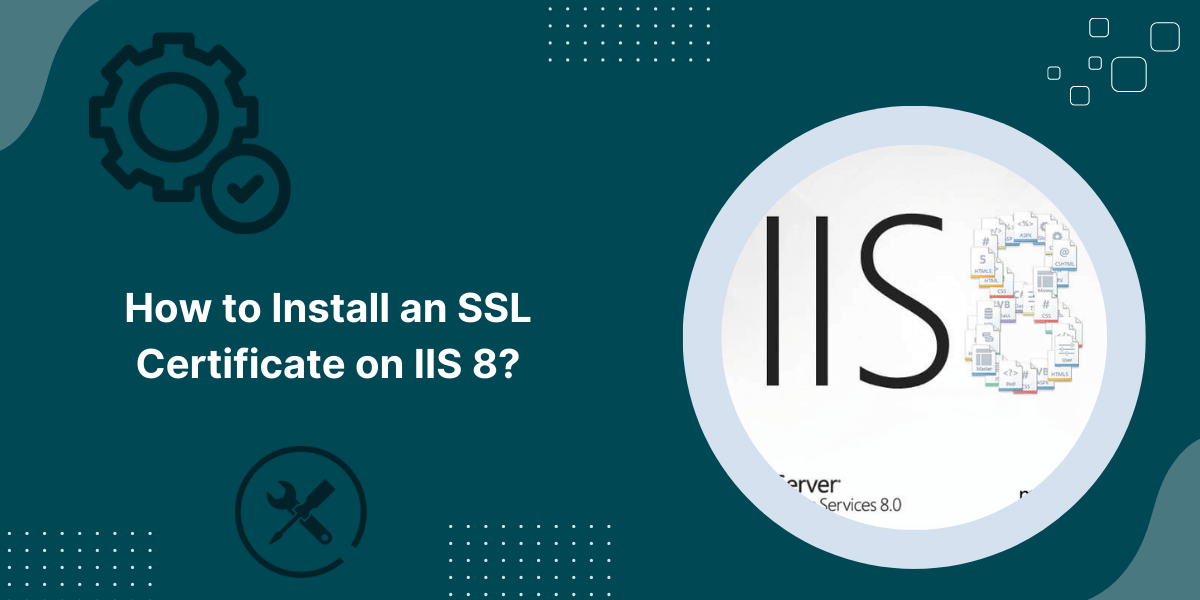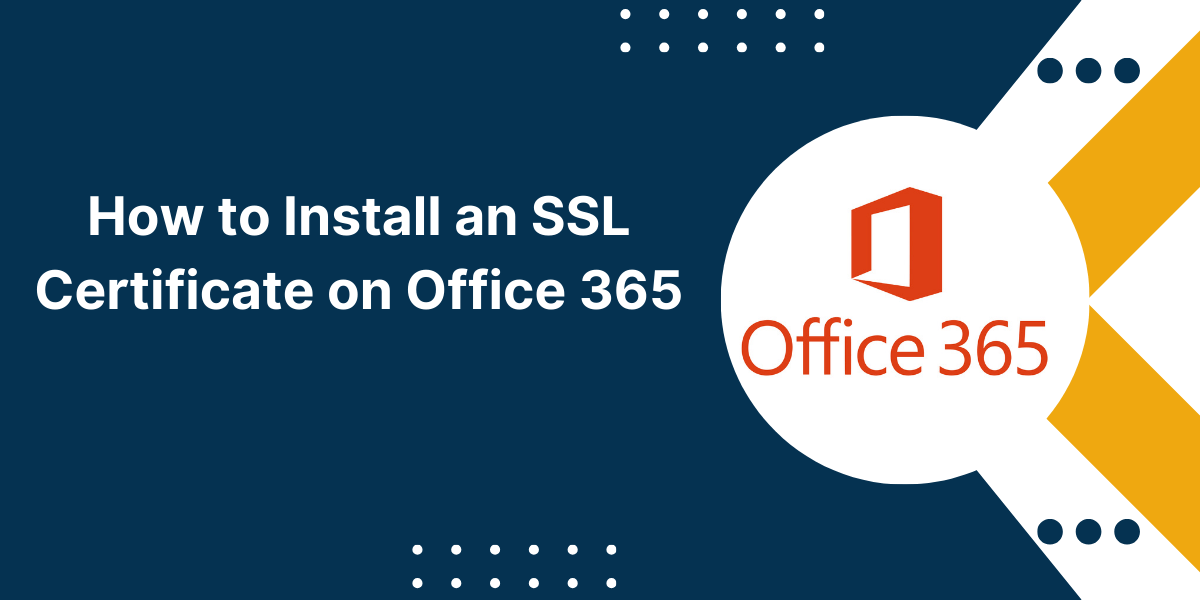CSR Creation & SSL Certificate Installation on IIS 8 or later
An SSL certificate allows you to enable HTTPS on your IIS 8 web server, providing secure encrypted connections between the server and clients. Installing an SSL certificate on IIS 8 involves obtaining a certificate, importing it into IIS, binding it to websites, and potentially installing intermediate certificates. This comprehensive guide will walk you through the entire process of installing and configuring SSL certificates on IIS 8.
To install an SSL certificate on IIS 8, you first need to generate a certificate signing request and acquire a signed certificate from a trusted certificate authority. Once you have the certificate file, you can import it into your IIS 8 server, bind it to websites and applications, and restart IIS to activate HTTPS protection. Following proper SSL installation steps will ensure your IIS 8 server and websites are communicating securely over encrypted channels.
Importing the SSL Certificate into IIS
Once you have your SSL certificate file from the CA, you need to import it into IIS. Here are the steps:
- Open the IIS Manager on your Windows Server.
- In the connections pane, expand the server’s name and click on the ‘Server Certificates’ icon.
- In the Actions pane on the right, click ‘Import’.
- In the import dialog, browse to your SSL certificate file (will have a .crt, .cer or .p7b extension).
- Enter the certificate’s friendly name in the text box. This is the name that will identify the cert in IIS.
- Select the Personal certificate store location. Click OK.
- The certificate will now appear in the list of installed certificates. Check the Issued To and Issued By fields for confirmation.
The certificate is now imported into IIS 8 and available to be bound to websites.
Binding the SSL Certificate to Websites
Once imported, the SSL certificate must be bound to sites and applications in IIS before it can be used to enable HTTPS. Here are the steps to bind a cert:
- Return to the IIS Manager and expand ‘Sites’ in the connections pane.
- Right-click your website or application and select ‘Edit Bindings’.
- In the Site Bindings window, click ‘Add’.
- In the Add Site Binding popup:
- Set the Type to HTTPS.
- Choose the imported certificate in the ‘SSL certificate’ dropdown.
- Specify the HTTPS port (443 is common).
- Optionally set the Host name if you need unique bindings per hostname.
- Click OK.
- The binding will appear listed for the site. Click ‘Close’.
- In the Actions pane, click ‘Restart’ to restart the site and load the new binding.
The certificate is now attached to the website. Repeat these steps for any additional sites needed.
Installing Intermediate Certificates
Some certificates rely on intermediate certificates to establish the chain of trust. If your CA provided any intermediate certs, you would need to install these into IIS as well.
Here is how to install intermediate certificates:
- Return to the Server Certificates section in IIS.
- Right click the Server Certificates icon and select ‘Open Feature’.
- In the Intermediate Certification Authorities store, click ‘Import’ in the Actions pane.
- Browse to and select your intermediate certificate file.
- Enter a friendly name and select Personal for the store. Click OK.
- Restart any sites with bindings to reload the certificate chains.
The intermediate CA will now be installed and part of the certificate chain.
Testing HTTPS Connectivity
As a final step, verify that HTTPS is functioning properly after installing the SSL certificate.
- Open a browser and navigate to the site’s URL with https:// prefix.
- Check for any certificate errors or warnings. With a properly installed certificate, none should appear.
- Click the padlock icon and inspect the certificate details. Verify the issuer and subject fields are as expected.
- Use an SSL test tool like SSL Labs Server Test to analyze HTTPS implementation and grade the strength.
- Test site functionality to ensure all pages, links, assets, etc. load securely over HTTPS.
If any issues come up, revisit the installation steps to troubleshoot. Proper HTTPS functionality confirms the SSL certificate was installed correctly.
Renewing Expired Certificates
SSL certificates eventually expire. Here is how to renew them in IIS:
- When a certificate nears expiration, purchase or generate an updated version using the same key steps initially.
- Import the new certificate into IIS following the same import process. Give it a distinct friendly name.
- Edit the HTTPS binding on the site to point to the new certificate.
- Remove the old, expired certificate from the IIS cert store once the updated one is in place.
- Consider setting calendar reminders for future renewals to avoid disruption.
That covers the basic renewal process. Some CAs also support auto-renewal or reissue expired certificates.
Conclusion on Install SSL Certificate on IIS 8
Configuring HTTPS by installing an SSL certificate is an essential security step for any production IIS 8 web server. With HTTPS enabled, websites can securely transmit sensitive user data and defend against threats like data interception attacks. While the process involves several steps like obtaining a trusted certificate, properly importing, and binding it in IIS 8, and installing intermediate CAs, this guide has outlined the necessary procedures in detail. Following these best practices for importing certificates, testing connectivity, renewing expiring certs, and troubleshooting issues will help administrators successfully deploy transport layer encryption and gain the multitude of benefits offered by SSL technology on their IIS 8 servers.
FAQs about Install SSL Certificate on IIS 8
What types of SSL certificates can I use with IIS 8?
The main types of SSL certificates that can be used with IIS 8 are single domain, wildcard, and subject alternative name (SAN) certificates. Single domain certificates secure one domain, while wildcard and SAN certificates can secure multiple domains.
How do I create a certificate signing request (CSR) for an SSL certificate on IIS 8?
To create a CSR in IIS 8, go to Server Certificates, right-click the server’s name, and select “Create Certificate Request”. Enter details like organization name, location, etc. and select the cryptographic provider. This generates a CSR file to submit to a certificate authority.
How do I bind an SSL certificate to a website in IIS 8?
In IIS Manager, select the website, open the SSL Certificates feature, and import or bind the SSL certificate to the site. Make sure you bind the certificate to the correct IP address and port combination.
How do I enable HTTPS for a website in IIS 8?
To enable HTTPS, open the site’s SSL Settings and check the “Require SSL” option. Also bind the certificate in the SSL Certificates section. Restart the site if prompted to enable HTTPS.
How do I troubleshoot SSL certificate errors in IIS 8?
Errors like certificate name mismatch or expired certificates can be fixed by binding the correct certificate or renewing it. Also check for issues like incorrect cipher suite selection in SSL settings.
Do I need a dedicated IP address for an SSL certificate on IIS 8?
Yes, a dedicated IP address is required to bind an SSL certificate on IIS 8. The certificate is bound to the IP-port combination. You can’t bind multiple SSL certs to the same IP-port.



